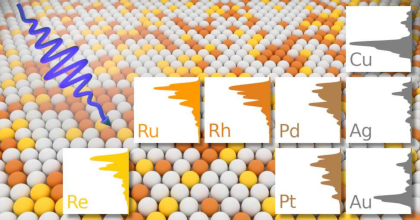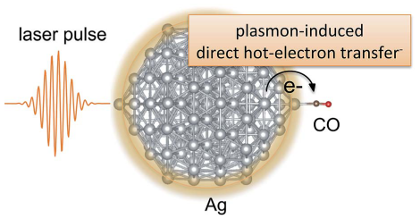Tailoring hot-carrier distributions of plasmonic nanostructures through surface alloying
J. Fojt,
T. P. Rossi,
P. V. Kumar,
and
P. Erhart
ACS Nano 18, 6398
(2024)
arXiv:2311.09996
doi: 10.1021/acsnano.3c11418
zenodo: 10047664
(associated data)
Download PDF

Alloyed metal nanoparticles are a promising platform for plasmonically enabled hot-carrier generation, which can be used to drive photochemical reactions. Although the non-plasmonic component in these systems has been investigated for its potential to enhance catalytic activity, its capacity to affect the photochemical process favorably has been underexplored by comparison. Here, we study the impact of surface alloy species and concentration on hot-carrier generation in Ag nanoparticles. By first-principles simulations, we photoexcite the localized surface plasmon, allow it to dephase, and calculate spatially and energetically resolved hot-carrier distributions. We show that the presence of non-noble species in the topmost surface layer drastically enhances hot-hole generation at the surface at the expense of hot-hole generation in the bulk, due to the additional d-type states that are introduced to the surface. The energy of the generated holes can be tuned by choice of the alloyant, with systematic trends across the d-band block. Already low surface alloy concentrations have a large impact, with a saturation of the enhancement effect typically close to 75% of a monolayer. Hot-electron generation at the surface is hindered slightly by alloying but here an judicious choice of the alloy composition allows one to strike a balance between hot electrons and holes. In this context, it is also important to consider that increasing the alloy concentration broadens the localized surface plasmon resonance, and thus decreases hot-carrier generation overall. Our work underscores the promise of utilizing multicomponent nanoparticles to achieve enhanced control over plasmonic catalysis, and provides guidelines for how hot-carrier distributions can be tailored by designing the electronic structure of the surface through alloying.



